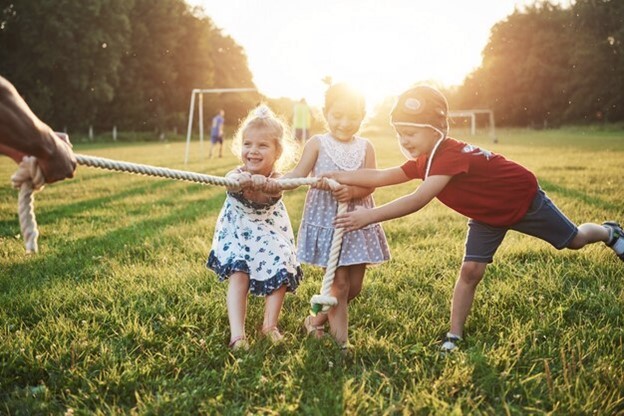From Bumps to Battle Scars: Common Childhood Injuries
Childhood injuries are a common part of growing up. Injuries can leave physical scars but also emotional ones, and our role as parents is to guide our children through these experiences with care and empathy.
In this article, we will explore the different types of common childhood injuries, prevention strategies, nurturing physical and emotional healing, and celebrating resilience and courage.


Types of Common Childhood Injuries
Childhood is a time of exploration and adventure, often leading to bumps, bruises, scrapes, and cuts. These incidents are a normal part of a child's active lifestyle.
Understanding that these injuries contribute to our child's growth and development is important. Yet, if they ever become a significant problem or source of insecurity, one way to address the physical scars left behind is through laser scar removal. This innovative procedure helps minimise the appearance of scars and restore confidence in children.
Prevention Strategies
Prevention is key when it comes to childhood injuries. Here are some practical tips for to keep your little ones safe:
- Childproofing Spaces: Childproofing your home is essential to create a safe environment for your child. Install safety gates, secure furniture, and keep hazardous substances out of reach.
- Safety Gear: Ensure your child wears appropriate safety gear when engaging in activities such as biking, scooting, or participating in sports. Helmets, knee pads, and elbow pads can provide valuable protection.
- Teach Safety Rules: Teach your child basic safety rules, such as looking both ways before crossing the street, using handrails on stairs, and avoiding dangerous areas.
- Supervise Your Children: Watch your child, especially in unfamiliar or potentially hazardous environments. Supervision can greatly reduce the risk of accidents.
- First Aid Knowledge: It always comes in handy to be familiar with basic first aid knowledge, especially when you’re a parent. Learn how to properly clean wounds, apply bandages, and recognise when professional medical attention is needed.
Nurturing Physical Healing
When a child sustains a physical injury, it's important to provide proper care and support. Here are some steps to follow:
- Clean the wound gently with mild soap and water
- Apply an appropriate bandage to protect the injury and keep it clean
- Monitor the wound for signs of infection, such as redness, swelling, or pus
- If the injury does not show signs of improvement or the wound is deep or severe, seek professional medical attention promptly.
It's also important to foster a positive attitude toward healing and resilience. Encourage your child to engage in enjoyable activities while taking precautions to prevent further injuries.
Addressing Emotional Healing
Childhood injuries can have an emotional impact on children. As a parent, you play a vital role in addressing these emotions and promoting healing. Here are some ways to support your child:
- Create an open and safe space for your child to express their fears, anxieties, or trauma associated with the injury.
- Listen attentively and validate their feelings, showing empathy and understanding.
- Offer reassurance and comfort, emphasising that their emotions are valid and that healing takes time.
- Seek professional help if your child's emotional reactions persist or significantly affect their daily life.
Celebrating Resilience and Courage
While injuries can be challenging, they also provide an opportunity to celebrate resilience and courage. Encourage your child to see their injury as a temporary setback rather than a permanent limitation. Emphasise the importance of maintaining a positive mindset and applaud their bravery throughout the healing process.
As parents, it's our responsibility to guide our children through these experiences with care and empathy. By understanding the different types of injuries, implementing prevention strategies, nurturing physical and emotional healing, and celebrating resilience, we can help our children overcome bumps and bruises and emerge stronger than ever.